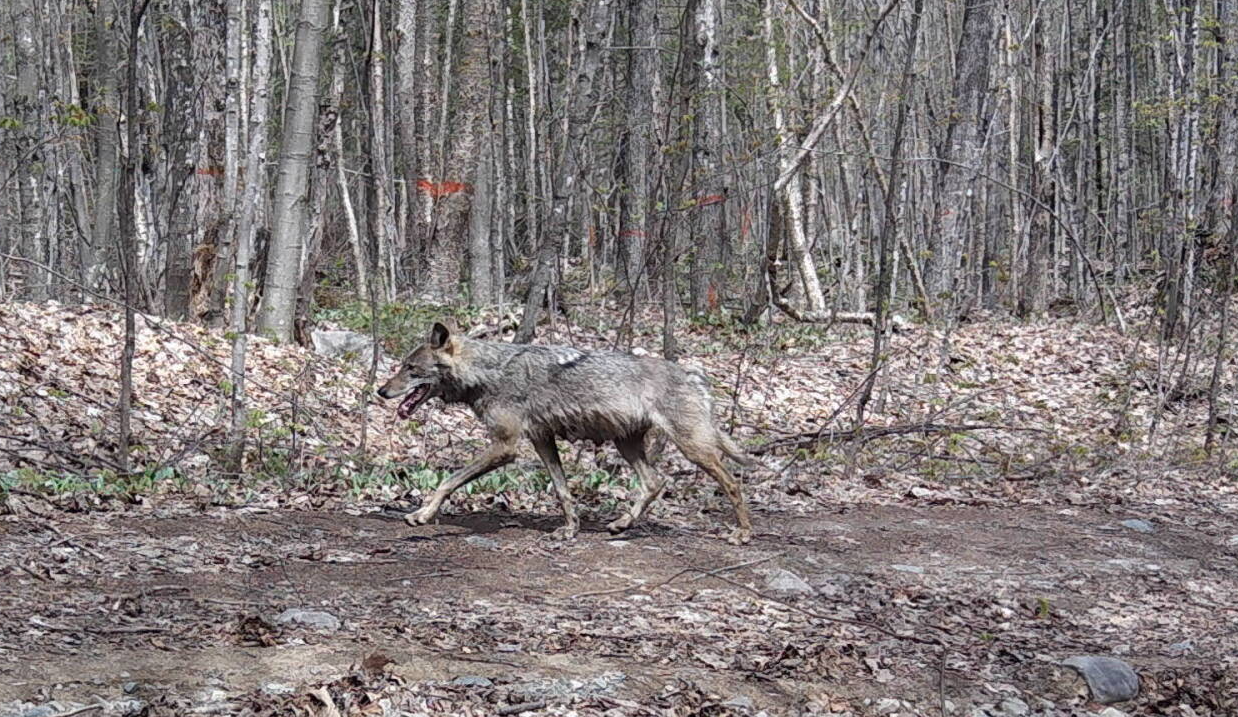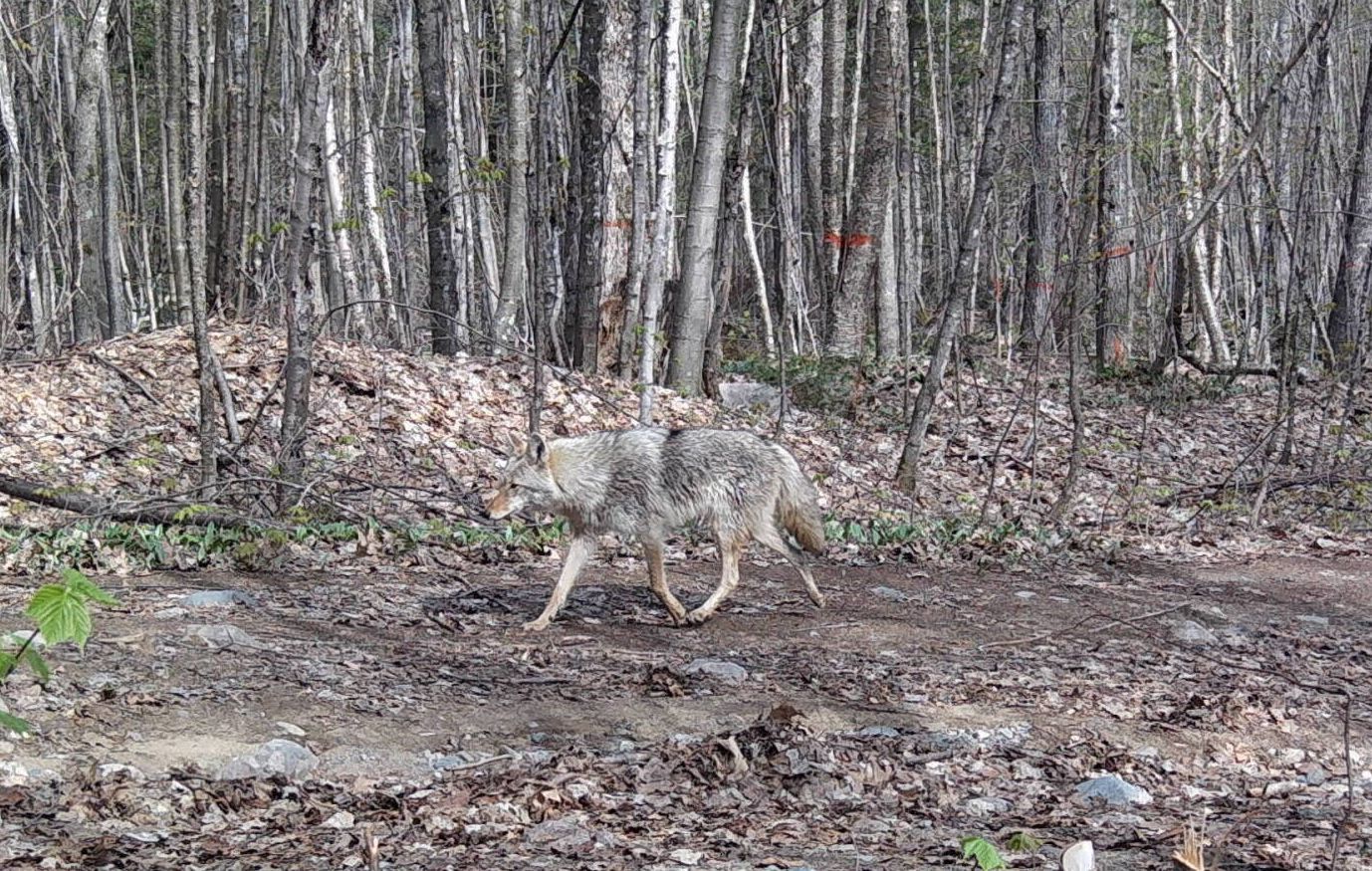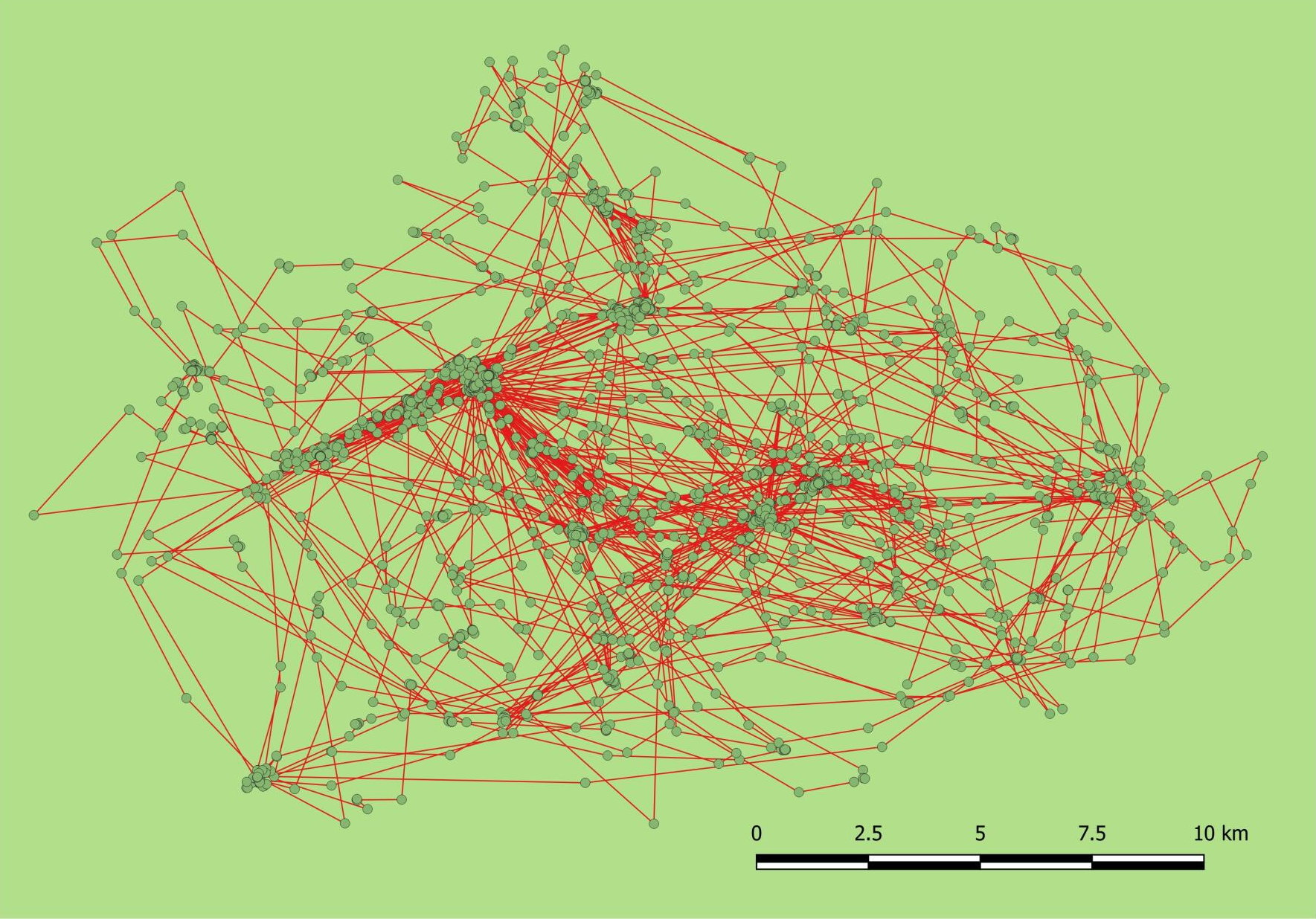Wildlife Research Project
Inside the Mysterious Life of a Mother Wolf
If you have been following along with our wildlife research project, you’ll know that March 2022 was a busy month for us! We were able to radio collar, not one, but two female grey wolves; both showing completely different movements as they utilize the land.
Around the same time we collared Ruby, we collared an adult female wolf referred to as Fifi. Fifi was originally collared near our Sylvan Valley research site and after her release, quickly settled into what appears to be her core habitat in an area north of Garden River.

With the help and guidance from Garden River First Nation’s Fish & Wildlife, we placed some trail cameras in the area and quickly learned that Fifi was not alone. An adult male wolf, who we assume to be her breeding partner has been observed throughout Fifi’s home range on multiple occasions.

As a protective measure, we are intentionally withholding the exact location of this home range area. However, it may be characterized as densely forested and removed from most human-made landform features and activity. Transmission signals indicate that Fifi has a territory approximating 475km² in size; a number that is on par with the average home range of 522km² seen in previous wolf studies conducted in Northern Ontario. Aside from Fifi and her breeding partner, there has been no conclusive evidence of additional pack members in this area. However, we are not yet ruling anything out! A series of audio recorders deployed throughout Fifi’s territory are being analyzed in the hopes of picking up howling that might contribute to a pack size estimate.

As one would imagine, there is a level of dedication that comes with monitoring the movements of wildlife, so you can imagine our dismay when Fifi’s signal disappeared in early May. For 9 days we patiently waited until sporadic signals started rolling in, painting a picture of what we believed to be extremely exciting news: Fifi was denning with pups!

From what we can tell based on GPS transmission signals and ground observation, over the course of 8 weeks, Fifi used two different denning areas before moving on to an ‘activity area’ in mid-June. This type of area, known as a rendezvous site, is a carefully selected location to which weaning pups may be moved. Under the watchful eye of their parents or another member of the pack, the pups have more room for activity, growth and socialization. Typically, these types of sites are frequented until early to mid-October by which time the pups may be sufficiently strong and aware to join mature wolves as they range more broadly throughout their territory.
By following Fifi and her growing family via both GPS position transmissions and trail cam observations we hope to gain more insight into the behavioural habits and mysterious movement patterns of local wolves. We can then use our observations to compare habitat interactions and movements to other subjects such as Ruby, the long travelling wolf. In addition to furthering our understanding of how these wolves are using and moving through their habitat, we hope to obtain broader information on how they influence the composition, stability and overall health of the ecosystem.
Our project is made possible thanks to a passionate group of volunteers and strong collaborative partners.
You can learn more about our partners here.
The Algoma Highlands Conservancy is a not-for-profit organization created to protect the beauty and ecological integrity of King Mountain and Robertson Cliffs. Our lands offer an extensive network of trails that are open year-round for non-motorized recreational use.
The Algoma Highlands Conservancy is a not-for-profit organization created to protect the beauty and ecological integrity of King Mountain and Robertson Cliffs. Our lands offer an extensive network of trails that are open year-round for non-motorized recreational use.
Algoma Highlands Conservancy
Algoma Highlands Conservancy



